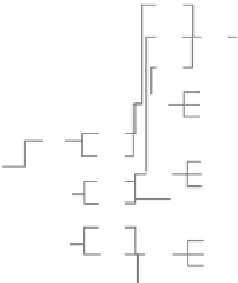Database Reference
In-Depth Information
The technologies in the TEDA have been implemented successfully at the
Asian telco client we just mentioned earlier, and others as well. The inflection
point that the TEDA can deliver is astounding. Our Asian telco client previ-
ously took 12 hours to process its CDR data. Now, Streams-based ingest and
transformation of CDRs is complete in less than one minute from the point
the CDR is generated, enabling them to achieve real-time insights and offer
new services such as usage-based offers. Another benefit is processing effi-
ciency: Streams typically only needs one tenth of the amount of processing or
storage required by typical batch applications used by telecommunications
providers today.
The following sections explain the three main analytics functions that are
included in the TEDA: CDR enrichment and de-duplication, network quality
monitoring, and key customer experience indicators tracking.
Call Detail Record Enrichment
Using the TEDA, Streams can ingest CDRs and perform enrichment and
de-duplication activities in near-real time. Figure 9-5 shows a high-level view
of the TEDA architecture, including the flow graphs of TEDA logic and their
Dashboards
File parsing and
error handling
Rules: Lookups and
Transforms
Checkpoint
Controller
De-duplication
Bloom Filter
Parallelizing
Source
CDR
Repository
Lookup Data
Bloom State
Checkpointing
CDR Statistics
Input Files
Output
Files
Metadata Database
Figure 9-5
The TEDA architecture





















































































































































